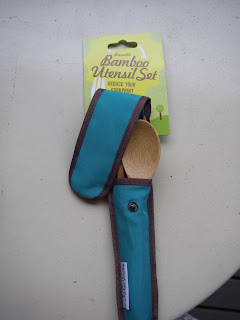 |
If you want to see the Chum Salmon returning in their camo outfits, here are viewing opportunities on Saturday November 19, 10-1. Docents will be there to answer questions. Valley Nursery in Poulsbo Fish Park in Poulsbo Chico Creek Blackjack Creek – on the Bridge by Kentucky Fried Chicken Add caption |
Paul Dorn is the fish biologist for the Suquamish Tribe, but he is much, much more. He is the go-to guy for all things Salmon in Kitsap County. He always makes time to educate folks about our iconic anadromous friends: the Salmon.
This is what he was up to on October 7, at the Norm Dicks building in Bremerton. WSU is sponsoring a group of Salmon Docents in the county. Paul was initiating them with a packed day of learning. Teachers often ask me to talk to their students about Salmon, so I attended Paul’s lecture to refresh my info.
Paul started by telling us that the Salmon or Oncorhynchus (Russian - meaning hooked snout) created their own habitat 10,000 years ago after the last Puget Sound glacial event. They made their way down from the north and out to sea through a barren, scraped and scarred habitat. After returning to fresh water to spawn, they died leaving their carcasses to become fertilizer for vegetation and trees that would become the important riparian habitat Salmon need. Leaves fell into the water feeding the insects that nourish salmon young. The trees in turn fell into streams building shelter for the newly hatched salmon and forming the riffles and pools so important for salmon streams. As I was listening to Paul, I wondered; “Are we the only species that destroys our habitat instead of nurturing it?”
The Salmon circle continues today with five species of salmon returning to home streams that drain into the Salish Sea. These are Chum, Chinook, Silver, Pink and Sockeye. In Kitsap our largest Salmon run consists of Chum Salmon. We also have hatchery raised Coho, and Chinook Salmon returning to local streams. Pinks can also be found here and there.
Our largest native Chum run returns to Chico Creek. Chum Salmon are nicknamed Dog Salmon because of their large canine teeth that appear at spawning time. After being out to sea for 2-4 years, something triggers the schools of Salmon to return home to spawn. Scientists think they find their way by using their exquisite sense of smell. Salmon out smell dogs. The Salmon’s sense of smell is to dogs’ sense of smell as the dog’s is to humans’ limited ability! Vibrations that are sensed through fishes’ lateral line also guide them home.
Hanging out in the estuary, the mottled markings of their bodies make Chum look like they are dressed in camouflage gear. They wait for a good rain to allow them up the fresh water stream. Chum is the latest Salmon run: Late November sometimes extending into December. Chum are the most laid back species of the five. They rarely jump, instead choosing to go around and under obstacles. Watching them swim upstream, we see that they can travel with half of their bodies out of the water. This is a good adaptation for spawning in our flat, shallow Kitsap streams. The Salmon do not eat and are already decaying a bit. The reaction of being in fresh water causes white splotches to appear on their bodies.
Using her tail, the female disturbs the rocks to build a nest or redd. Meanwhile the males are very aware of what is going on. They viciously compete with each other to fertilize the 3,000 eggs that the female will deposit there. After fertilization the male goes on upstream for further conquests before dying. The female lingers protecting her nest until, exhausted, she dies adding nutrients to the stream that will indirectly nurture her hatchlings.
Life is happening under those rocks. One day, alevin pop out of the eggs. Alevin remain in the rocks and do not yet have mouths to in which to eat. Their food hangs on their bellies in a yolk sack. After this yolk sack is absorbed, they wriggle out and start looking for stream bugs to eat. They are not only eating, but being eaten although they now have parr marks along their sides to help them blend into the streambed.
Chum remain in the stream for only a few months. By March they are making their way to the estuary. They are now smolts, adjusting to being a salt water fish. Chum rely heavily on the rich nutritious soup of the estuary. They quickly gain weight and grow large enough to school out to sea to dine on sandlance, surf smelt , anchovies and squid. In another 2 – 4 years, at least one pair from each redd will return to repeat the cycle.
Not only do Chum Salmon depend on the estuary, they need to return to a healthy stream. A salmon stream needs plenty of oxygen, gravel and woody debris. Spawning Salmon need cold water. . .that is why trees shading the stream are the most important ingredient for salmon habitat. Paul pointed out that our Salmon streams were a source of drinking water for thousands of years. He had a good idea . . . we should be required to drink out of a Salmon stream once each year. This may make maintaining a clean stream more of a priority for us.



